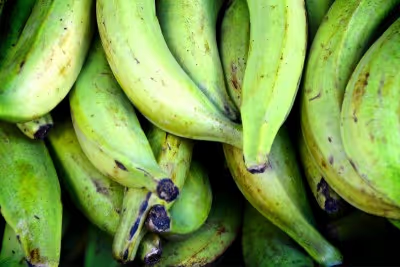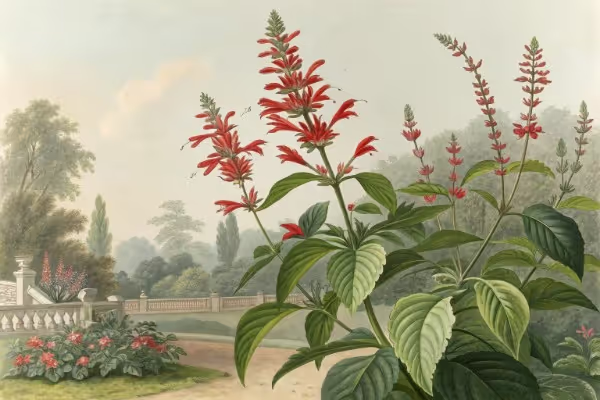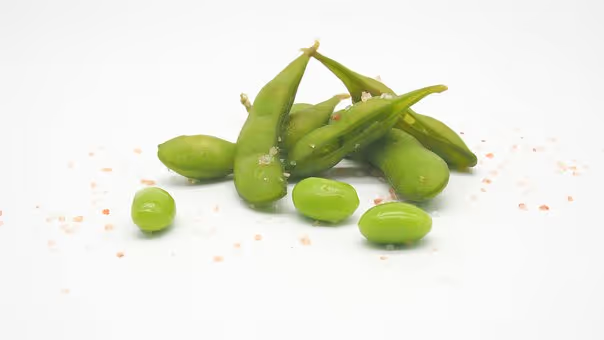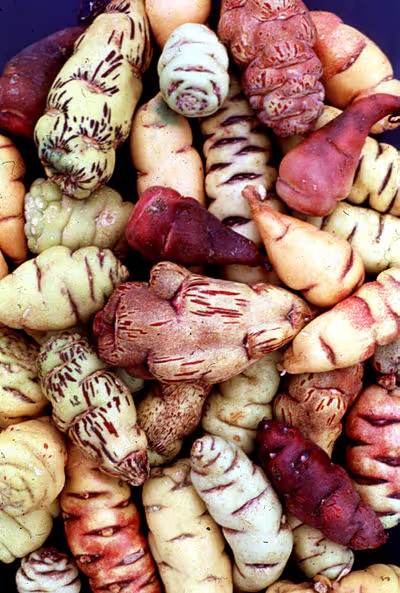Growing Plantain: Simple Care Tips for Healthy Plants
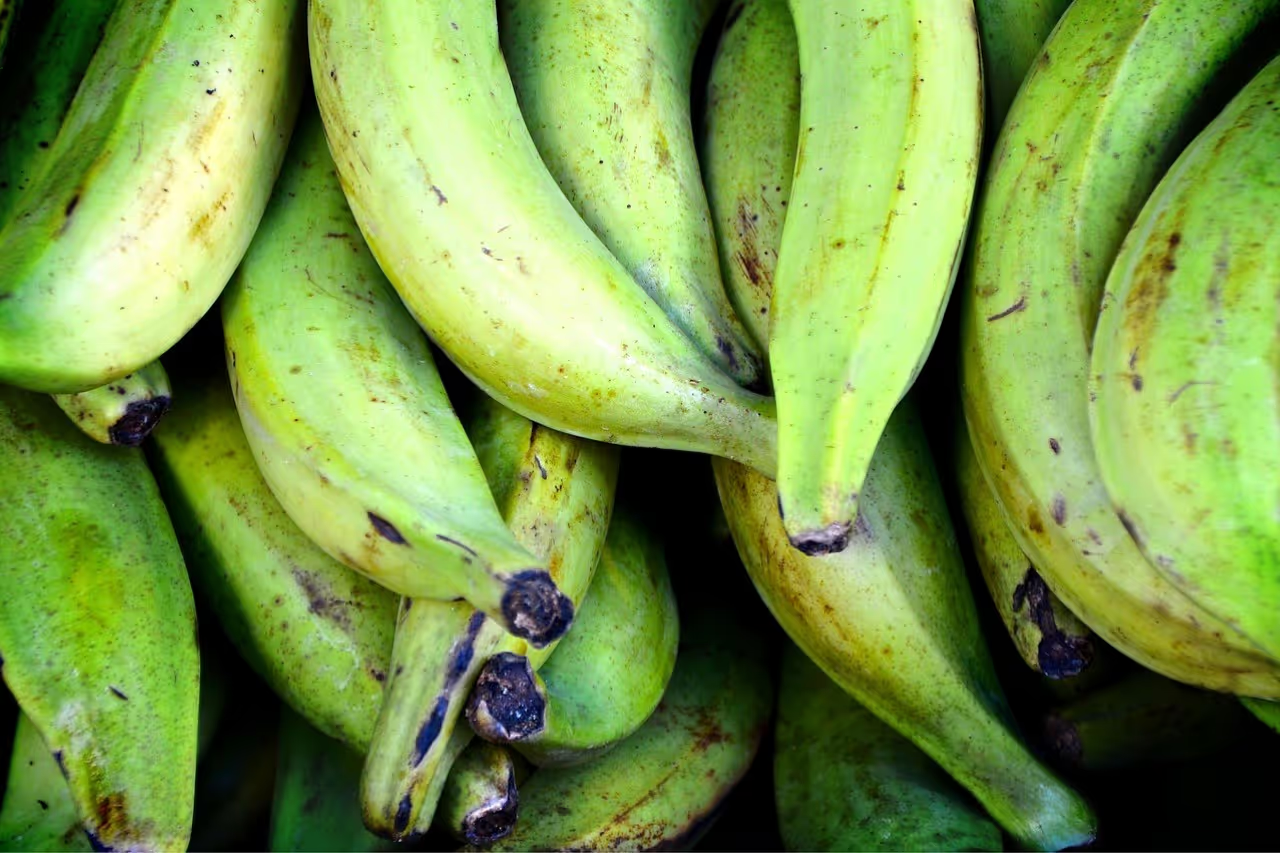
Growing Plantain
Growing plantain demands sun-drizzled spots, rich, loamy soil, and generous watering. Plant plantain pups 12 feet apart, mulch deeply to lock moisture, and feed generously with compost for lush results. Stay attentive—these vigorous growers reward your patience with broad leaves and abundant fruit. Curious about coaxing plantains to flourish? Keep reading.
Cheatsheet: Plantain Growing & Care Mastery
🌱 Choose the Right Place
- Full sun to partial shade suits best.
- Thrives in well-drained, loose soil.
- Soil pH: 4.6–7.5 (acidic to neutral).
🛠️ Tools and Products You'll Need
- Gloves
- Hand trowel
- Watering can
- Compost or organic mulch
- pH meter (optional)
💦 Water & Feed
- Keep consistently moist, not soggy.
- Mulch keeps roots cool, conserves water.
- Add compost every 6–8 weeks.
🌾 Sowing & Spacing
- Sow seeds 1/4 in (0.6 cm) deep.
- Space 8–12 in (20–30 cm) apart.
- Germinates in 7–21 days at 60–75°F (15–24°C).
🌿 Harvest & Use
- Pick young leaves for eating or tea.
- Older leaves: best for skin salves.
- Harvest lasts spring–fall.
🦠 Pest & Disease Control
- Rarely affected. Remove snails by hand.
- Watch for powdery mildew. Thin plants for airflow.
💚 Health & Resilience
- Leaves rich in vitamins A, C, K. High in calcium.
- Traditional wound, insect bite, and digestion remedy.
- Boosts self-sufficiency and foraging skills.
📝 Step-by-Step Growing
- Prep Site
- Remove weeds. Loosen soil. Mix in compost.
- Sow Seeds
- Plant seeds 1/4 in (0.6 cm) deep, 8–12 in (20–30 cm) apart.
- Water Well
- Water gently to settle seeds and maintain moisture.
- Mulch & Feed
- Apply mulch. Replenish compost every 6–8 weeks.
- Harvest & Care
- Harvest young leaves as needed. Remove flower spikes for more foliage.
-
Growing Plantain: Simple Care Tips for Healthy Plants
I planted my first plantain in a heat pocket beside a south wall, and the bunch hit 38 lb, about 17 kg, with leaves so wide they clapped in the wind like sails. Then a surprise 28 F, minus 2 C, flattened the stand overnight, which taught me how to site, feed, and protect these heavy feeders for real.
Plantain basics, the quick clarity
Plantain here means the starchy banana, Musa AAB types, grown for frying, boiling, and mashing. It is not the lawn herb Plantago major, a completely different plant.
Plantains grow from an underground corm, pushing up a leaf-sheath tower called the pseudostem. After fruiting once, that stem dies, and a sucker takes over.
Climate and siting for power growth
They thrive in steady warmth, roughly 75 to 95 F, 24 to 35 C, with zero frost exposure. Growth slows below 55 F, 13 C, and cold snaps can blacken leaves in a single night.
USDA zones 10 to 11 are carefree outdoors, while 9b works with winter protection and quick spring recovery. I tuck mine behind a windbreak, since leaves shred in gusts.
“Plantain is a staple food and income source for millions across Africa, Latin America, and the Caribbean.” FAO, Global Banana Facts
Soil, drainage, and planting
Use deep, well drained loam with a pH of 5.5 to 7.0, and raise the bed 6 inches, 15 cm, if you have heavy clay. Soggy corms invite rot and weevils.
Space plants 8 to 10 feet, 2.4 to 3 m, center to center, because the mat expands. I set tissue-culture plants a hair high, then mulch immediately.
Water like you mean it
Plantains drink, especially in heat. Keep soil evenly moist with 1.5 to 2 inches, 38 to 50 mm, of water per week, more on sandy ground.
Mulch 4 to 6 inches, 10 to 15 cm, of composted chips or shredded leaves, keeping it off the pseudostem to prevent rot. In dry spells, I water in the morning and again lightly at dusk.
Feeding for heavy bunches
Plantains crave potassium, the fruit-filling element. Aim for an NPK pattern near 3-1-6 with magnesium and boron in the mix.
I split-feed monthly through warm months, roughly 1.5 to 2 lb, 0.7 to 0.9 kg, of a high-K fertilizer per plant per year, plus a micronutrient drench twice in summer. If leaves pale between veins, add magnesium sulfate.
Suckers: manage the mat
Select one main stem and one strong follower, a sword sucker with a narrow leaf, then remove the rest. This keeps energy focused and fruit size up.
I desucker monthly with a clean knife, painting cuts with a bit of wood ash. Fewer stems, bigger bunches.
Flowering, timing, and harvest
From planting to fruiting takes 10 to 18 months, depending on heat and vigor. Once the flag leaf emerges, the purple inflorescence follows fast.
Harvest plantains green-mature when the fingers are full and the edges soften from angular to rounded. Bunches weigh 20 to 60 lb, 9 to 27 kg, so cut the stalk, not the hand, and lower it gently.
Pests and diseases, handled early
- Banana weevil (Cosmopolites sordidus): Chews the corm and topples stems. Use clean planting material, set pheromone traps, and remove plant debris where adults hide.
- Plant-parasitic nematodes (Radopholus, Pratylenchus): Cause root lesions and lodging. Hot-water treat suckers, 131 F, 55 C, for 20 minutes before planting, a tip I picked up from IITA pest notes.
- Black Sigatoka (Pseudocercospora fijiensis): Leaf-spot fungus that strips photosynthesis. Space plants for airflow, prune tattered leaves, feed well, and consider labeled copper or biologicals in humid climates.
- Fusarium wilt TR4: A soil-borne killer with no cure. Buy disease-free plants, never share contaminated soil, and rogue suspect mats immediately.
I bag bunches with ventilated sleeves in humid summers to deter thrips and sunburn. Sanitation and airflow prevent most headaches.
Cold snaps and overwintering
Before a frost event, I tie leaves up, wrap the pseudostem with breathable insulation, and mulch the mat like a sleeping elephant. If the top dies, the corm often lives and sends a new spear in spring.
For borderline zones, chop and drop the spent stem around the mat for extra potassium. The soil food web will repay you by harvest time.
Container culture that actually works
Use a 25 to 35 gallon, 95 to 130 liter, pot with drain holes and a coarse, rich mix. Dwarf or semi-dwarf plantain types keep life easier on patios.
Water daily in summer heat and feed lightly but often. Roll the pot beside a bright south window or into a greenhouse when nights dip below 55 F, 13 C.
Top plantain choices I trust
- FHIA-21 Giant plantain with good disease tolerance and heavy hands, great flavor for tostones.
- FHIA-20 Productive, sturdy plant architecture, handles wind better for me than older Horn types.
- French types Balanced bunch size and cooking quality, classic West African use.
- Horn plantain Big, long fingers, needs heat and feed to perform but pays back in the pan.
I source clean tissue-culture starts or pared, hot-water-treated sword suckers. Cheap, questionable corms cost more later.
Buying guide and quick checks
- Prefer certified, disease-indexed starts from reputable nurseries or labs.
- Look for stout, green tissue-culture plants with white roots, no mushy bases.
- If buying field-dug suckers, choose sword types 2 to 4 feet, 0.6 to 1.2 m, with solid corms and no weevil holes.
- Ask about cultivar group, AAB plantain, and days to harvest in your climate.
If you grow for market, trial two to three cultivars the first season. Keep notes on cycle length, bunch weight, and defect rates.
Yield math that keeps me honest
A single well fed plantain mat can give one large bunch per year after it settles in. In warm sites, two mats spaced properly can supply a weekly family fry-up in season.
FAOSTAT reports tens of millions of metric tons of plantain produced annually, with Africa among the top producing regions. FAOSTAT, 2022
Plantain vs banana, the quick compare
- Plantain: Starchy, harvested green-mature, best fried, boiled, roasted.
- Dessert banana: Sweeter, eaten ripe, AAB or AAA dessert groups.
- Both share care basics, but plantains usually need a little more heat to fill out.
I rotate plantain and dessert types in the same bed for pollen-free, staggered harvests. The mat stays productive without overcrowding.
My seasonal checklist
- Spring: soil test, compost, slow-release high K, set windbreak, plant sword suckers or tissue-culture starts.
- Early summer: select one follower sucker, mulch heavy, start monthly feedings.
- Mid summer: bag bunches, prune tattered leaves, irrigation audit, foliar micros if needed.
- Late summer: support heavy stems with padded props, watch for Sigatoka, keep airflow.
- Fall: harvest green-mature, chop and drop spent stem, set frost plan.
- Winter: protect corm, clean tools and stakes, plan next year’s rotation.
Ripening and kitchen use
Green plantains hold weeks at room temperature, then move from yellow to black as starch converts to sugar. For mofongo or tostones I cut them green; for sweet maduros I wait until the skin blackens and smells like caramel.
If you need fruit to ripen, keep it warm, 68 to 77 F, 20 to 25 C, and ventilated. Avoid refrigerators.
Smart companions and soil builders
I ring plantains with taro, lemongrass, and sweet potato to shade soil and knock down weeds. A banana circle with a compost pit in the center turns graywater and trimmings into fruit.
Spent leaves make fine mulch. The plant feeds the plant.
Anecdotes that saved me money
My windiest site ripped leaves to ribbons until I pruned the hedge downwind, not upwind, which eased the gust funnel. That alone added pounds to the bunch.
I once switched to a palm-special 8-2-12 with extra magnesium, and leaf quality jumped within three weeks. Sometimes the simplest tweak fixes the whole system.
Trusted references I lean on
- UF IFAS extension bulletins on Banana and Plantain culture for temp, water, and feeding ranges.
- IITA and CIRAD technical notes for weevil, nematode, and hot-water sanitation methods.
- FAOSTAT and the World Banana Forum for production statistics and cultivar background.
As one extension note puts it, “optimal growth aligns with warm temperatures, ample moisture, and high potassium nutrition,” a line I have proven in my own beds. Good science matches on-the-ground results.
Frequently Asked Questions About Growing Plantain
What's the ideal soil type for nurturing healthy plantain?
Plantain thrives in well-drained soils rich in organic matter. Keep it simple and authentic—mix compost or aged manure into sandy loam soil to provide balanced nutrition and proper drainage.
How much sunshine does my plantain plant need daily?
To witness vibrant growth, give your plantain at least six to eight hours of bright, direct sunlight per day. These sun-worshippers reward consistent exposure with vigorous leaves and hearty stems.
What's the smartest watering schedule for plantains?
Water your plantain deeply but sparingly. Once weekly is ideal, allowing the top inch of soil to dry out between watering sessions. Overwatering breeds fungal drama—practice restraint and consistency.
Should I fertilize my plantains, and if so, how often?
Absolutely—feed your plantains monthly during their growing season. Choose a balanced fertilizer rich in nitrogen, potassium, and phosphorus to boost foliage and fruit production. Organic fertilizers like fish emulsion or compost tea excel in delivering gentle nourishment.
How do I keep pesky insects away from my plantain leaves?
Regular inspections and manual removal of pests—like aphids and caterpillars—keep the situation under firm control. Encourage beneficial insects like ladybugs or use neem oil spray for an organic yet powerful deterrent.
When and how should I prune plantain plants?
Prune plantains judiciously to remove dead or yellowing leaves throughout the growing season. Using sharp, sterilized shears prevents disease and ensures your plant focuses energy on new, vibrant growth.
How can I tell when my plantain fruit is ripe and ready for harvest?
Pay attention to fruit size and skin coloration. Ripe plantains feel firm yet yielding, with skins turning from vibrant green to yellow or darkening to black, depending on desired usage. Trust your senses—aroma and touch guide the way.
Growing plantain is about respect—respect for the plant and the process. Give it rich soil, enough water, and regular pruning, and you’ll see it thrive. Stay sharp—watch for pests and don’t let weeds muscle in. The payoff is worth it: sturdy leaves and healthy fruit, season after season. If you’re hungry for more perennial staples, check out how to grow jicama or grow your own mulberry bushes. At the end of the day, growing plantain is honest work, and the results speak for themselves—lush plants, easy harvests, and flavors that put supermarket produce to shame.
The Prepper's Guide to Growing Plantain
Medicinal Uses for Self-Reliance
- Wound Healing: Freshly mashed plantain leaves applied as poultice reduce inflammation and accelerate wound repair.
- Natural Antibiotic: Leaves brewed as tea create antimicrobial solution effective against minor infections.
- Respiratory Relief: Dried plantain leaves steeped as tea provide relief from coughs, bronchitis, and asthma symptoms.
Long-Term Storage and Preservation
- Drying: Air-dry harvested plantain leaves away from direct sunlight; store dried leaves in airtight containers for medicinal tea throughout the year.
- Salve Making: Infuse dried plantain leaves in olive oil; blend with beeswax for shelf-stable antiseptic ointment.
- Freezing: Chop fresh leaves finely, portion into ice cube trays, and freeze for up to one year; thaw cubes for immediate topical application.
Self-Sufficient Propagation Techniques
- Seed Collection: Leave mature flower spikes intact until fully dry; harvest seeds, store in cool dry spot, viable for several years.
- Natural Reseeding: Allow selected plants to freely disperse seeds, establishing resilient, self-sustaining patches.
- Container Gardening: Grow plantain in containers for mobility and controlled growth, ideal for urban survival gardening.
Quick Nutritional Stats
- Vitamin C Source: 100 grams (3.5 oz) fresh leaves contain approximately 33 milligrams Vitamin C, supporting immune function.
- Rich in Minerals: Notable levels of iron, calcium, magnesium for dietary supplementation during shortages.
Environmental Adaptability
Plantain plants thrive in disturbed soils and tolerate extreme conditions, surviving drought, heat (up to 95°F/35°C) and cold periods (down to 5°F/-15°C), making them ideal plants for resiliency-focused growing strategies.
Find out which plants will thrive in your garden!
Answer a few fun questions and get custom plant recommendations perfect for your space. Let’s grow something amazing together!

start your season
